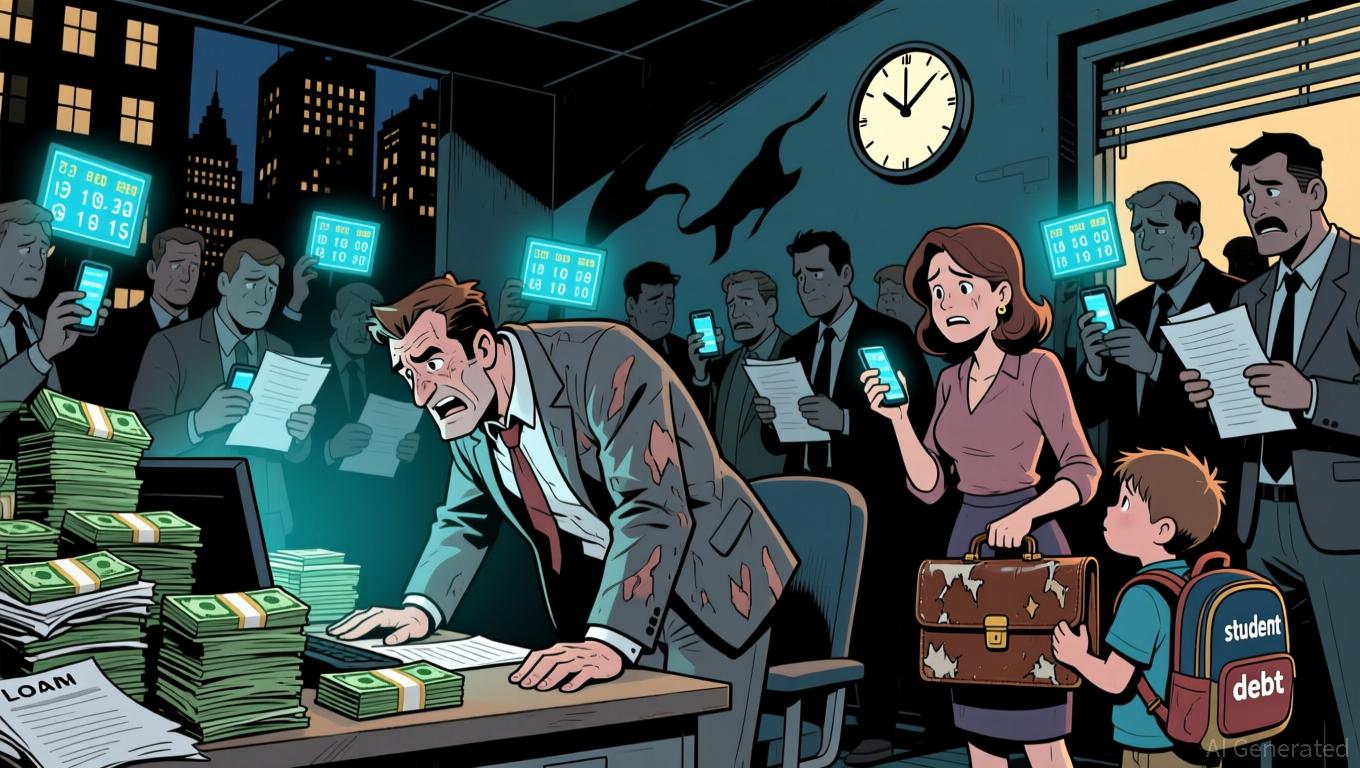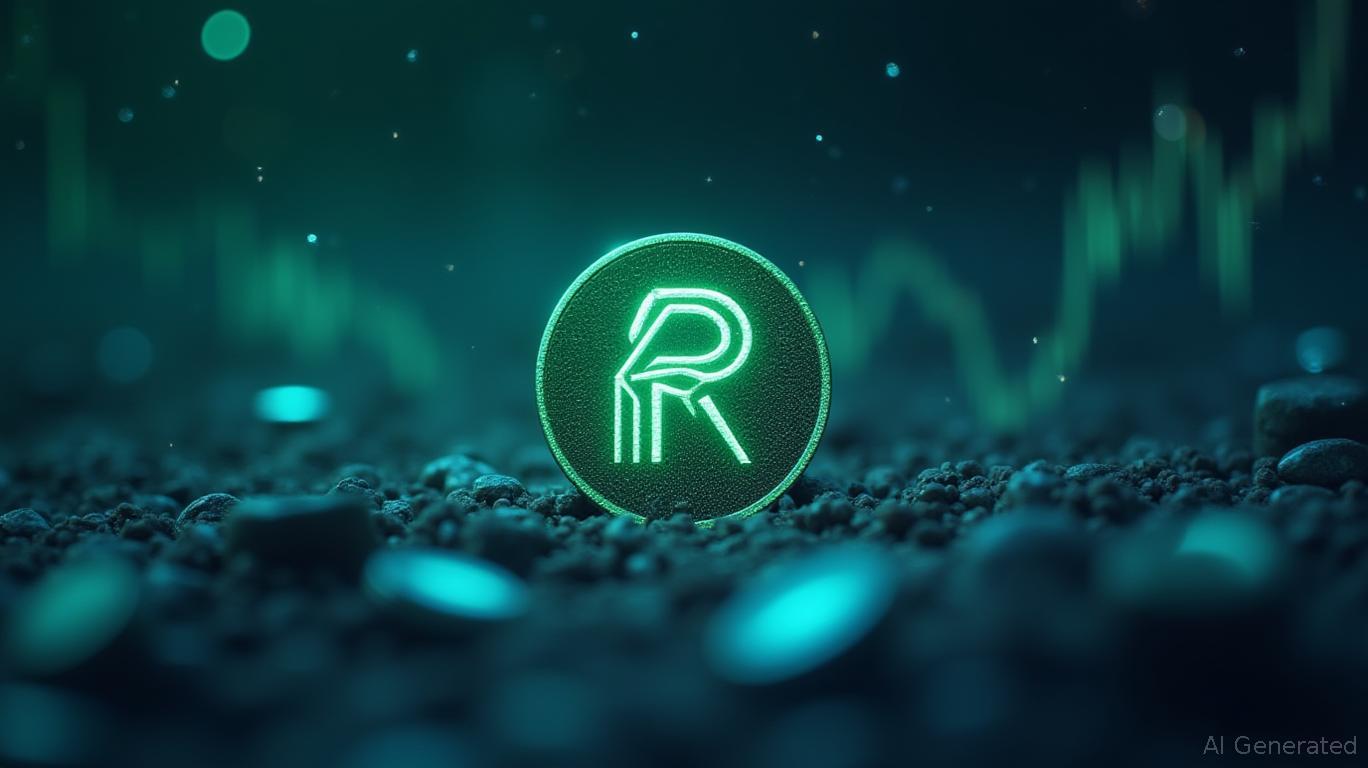Fed Faces a Choice: Boost Growth or Curb Mounting Debt?
- U.S. household debt hit $18.59 trillion in Q3 2025, driven by rising credit card, student loan, and home equity debt with delinquency rates at multi-year highs. - The Fed initiated rate cuts amid slowing job growth but faces a dilemma: easing economic strain risks inflating a consumer debt bubble while tightening worsens defaults. - Retailers, banks, and auto lenders face fallout as discretionary spending declines and loan defaults rise, while essential goods and debt collectors see increased demand. - P
As of the third quarter of 2025, American families are shouldering a record-breaking $18.59 trillion in debt, marking a $197 billion increase from the previous quarter, according to

The Federal Reserve’s recent shift toward lowering rates, with a projected total reduction of 75 basis points in 2025, signals its growing concern about the economic strain from rising debt, the report continues. Still, experts caution that reducing rates may not significantly ease the pressure from existing high-interest obligations. “The Fed is in a precarious position,” one economist commented, explaining that while rate cuts could encourage more borrowing for homes and businesses, they also risk further inflating the consumer debt bubble, according to the analysis.
This surge in debt is prompting companies—especially in retail, finance, and automotive industries—to rethink their strategies. Retailers selling non-essential goods, such as luxury brands and travel services, are seeing demand drop as families focus on necessities, the FinancialContent article notes. Meanwhile, traditional banks and credit card companies are preparing for a rise in loan defaults.
On the other hand, retailers specializing in essentials like Walmart and Costco continue to see steady demand, and companies in healthcare and utilities remain largely unaffected by shifts in consumer spending. Debt collection firms and lenders with varied sources of income are also profiting from the uptick in delinquencies.
The Federal Reserve’s predicament reflects wider global patterns. While mortgage loans remain relatively healthy due to strong home equity, the increase in non-mortgage delinquencies points to an uneven recovery. The central bank’s Financial Stability Report identifies high business debt and rising consumer loan defaults as major systemic threats, leading to calls for more targeted policy responses, the report says.
Looking forward, forecasts suggest the U.S. economy will expand by just 1.7% in 2025 and 1.4% in 2026, with inflation rates averaging 2.9% and 3.2% respectively, according to the analysis. The Fed’s anticipated rate cuts, expected to lower the federal funds rate to between 3.50% and 3.75% by late 2026, are intended to support a weakening job market while keeping inflation in check. However, ongoing tariffs and policy uncertainties could complicate these efforts.
The Federal Reserve’s upcoming decisions will depend on critical economic data. Reports on manufacturing and retail sales, due in early November, may influence future rate changes, according to the
With the debt crisis worsening, investors are watching delinquency rates and Fed policy closely. The next few months will be a test of the central bank’s ability to steer the economy through these challenges without triggering a wider financial downturn, the FinancialContent report concludes.
Disclaimer: The content of this article solely reflects the author's opinion and does not represent the platform in any capacity. This article is not intended to serve as a reference for making investment decisions.
You may also like
Bitcoin Updates Today: Bitcoin Faces Volatility Compression: November's Critical $100k Battle
- Bitcoin faces a volatility squeeze near $100,000 as November 2025 approaches, with potential for dramatic price swings. - Galaxy Digital cuts 2025 BTC price target to $120,000, citing institutional outflows, whale distributions, and market corrections. - Technical indicators show compressed Bollinger Bands and extreme volatility levels, historically preceding major price moves. - Geopolitical risks and regulatory scrutiny contrast with JPMorgan's $165,000 2025 forecast, pending ETF inflows and Fed policy

Starknet Allocates 100 Million STRK to Address DeFi’s Challenges in Scalability and Security
- Starknet allocates 100M STRK tokens to boost DeFi innovation, targeting scalability and security challenges through zero-knowledge infrastructure. - CeFi-DeFi convergence accelerates as platforms like SunPerp blend CEX usability with on-chain custody, surpassing $100M TVL despite recent sector vulnerabilities. - A $93M exploit at Stream Finance exposed DeFi risks, prompting urgent withdrawals and highlighting the need for robust risk frameworks in interconnected protocols. - AI integration in DeFi reshap

SBI and Chainlink Connect Traditional Finance and DeFi Through Secure Tokenized Compliance
- SBI Digital Markets adopts Chainlink CCIP to secure cross-chain transfers of tokenized assets like securities and real-world assets. - Integration uses CCIP's private transactions and ACE compliance engine to protect sensitive data while aligning with global regulations. - The partnership bridges TradFi and DeFi by enabling instant settlements and reducing cross-border transfer costs, supporting Asia-Pacific tokenized securities growth. - Industry experts highlight CCIP's role in addressing blockchain fr

Robinhood’s Bold Move: Expanding Prediction Markets via Collaborations Instead of Building Platforms
- Robinhood's prediction markets generated $100M+ annualized revenue in Q3 2025, surpassing expectations through partnerships with Kalshi and Polymarket. - The segment's explosive growth stems from 2024 regulatory changes and sports betting legalization, with 2.5B contracts traded in October 2025. - CEO Tenev prioritizes user scale over vertical integration, leveraging 26M users to capture market share without developing proprietary platforms. - Q3 revenue hit $1.19B with $386M net profit, driving $130B ma
